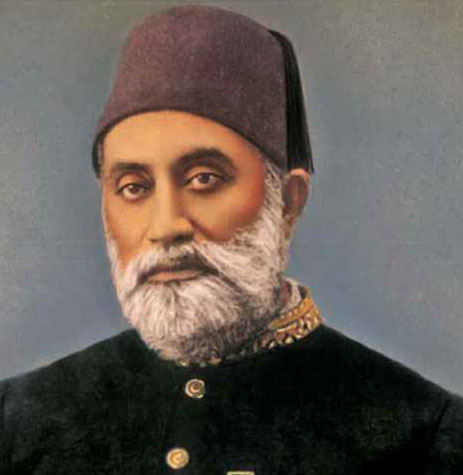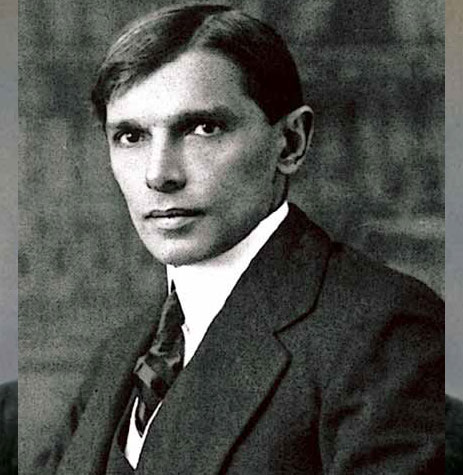
History of SMI
Glorious Past

Foundation by Hassanally Effendi:
Sindh Madressatul Islam was founded on 1st September 1885 by a group of enlightened Muslims of Sindh, led by Khan Bahadur Hassanally Effendi, as the first modern Muslim educational institution of Sindh, whose doors were open to everyone irrespective of their religious affiliations.
After end of the Mughul era in the subcontinent and annexation of Sindh by the British by the middle of nineteenth century, the Muslims in Sindh were not ready to accept the new system of education. This closed doors of social, economic and political development on them. This took its toll and by early 1880s the majority Muslim community in Sindh had degenerated to an abysmally low economic, social and political standing. It may be interesting to note that when the University of Bombay conducted the matriculation examination in Sindh for the first time in 1870, not a single Muslim student passed it, though Muslims constituted seventy-five percent of Sindh’s population.
Around this time an internal reformation movement amongst Muslims of India began. Three greatest proponents of this movement were Sir Syed Ahmed Khan of Aligarh in the North, Justice Syed Amir Ali of Calcutta in the East and Hassanally Effendi in the South-West. They employed education as tool for bringing social reformation. Hassanally Effendi took up the cause of establishment of Sindh Madressatul Islam, to which both Sir Syed and Justice Amir Ali extended fullest support including financial assistance.
The opening of Sindh Madressah proved to be harbinger of change for betterment amongst the Muslims of Sindh. Students from all over the region started flocking to this institution. Though SMI was founded primarily for the benefit of Muslims, its doors were equally open to followers of all other religions. Early records show that around ten percent students of SMI were always from non-Muslim communities. In addition to non-Muslim students, SMI also had several non-Muslim teachers on its payroll. This multicultural and liberal atmosphere helped in creating a cosmopolitan culture within the institution.
Association with Quaid-e-Azam M.A. Jinnah

In July 1887, less than two years of Sindh Madressah’s establishment, Quaid-e-Azam Muhammad Ali Jinnah got enrolled in the institution and studied here for the longest period of his academic life, from 1887 to 1892. He carried deep imprints of SMI on his mind throughout his life, which is evident from the fact that he bequeathed one-third of his personal property to Sindh Madressah through his last will. He also elevated his alma-mater from school to college level. He personally came to inaugurate “Sindh Madressah College” on 21st June 1943. On that occasion he was overcome by his sentiments. Speaking in a reminiscent mood, he declared before his audience that he knew every inch of the splendid grounds of the institution where he had studied and played as a schoolboy fifty five years earlier. “Every inch of these splendid grounds where I took part in various games, I know” Daily Morning News and Daily Star of India quoted him.
Alma Mater of Freedom Fighters:
In addition to Quaid-e-Azam, Sindh Madressah has educated several leading lights of firstly struggle for separation of Sindh from Bombay Presidency and subsequently of Pakistan movement, including Sir Shahnawaz Bhutto, Sir Abdullah Haroon, Sir Ghulam Hussain Hidayatullah, Khan Bahadur Mohammad Ayub Khuhro, Shaikh Abdul Majid Sindhi and others. It was in this background that Syed Ghulam Mustafa Shah, an alumnus of SMI and renowned educationist used to call SMI “Child of Sindh and Mother of Pakistan.” Besides the freedom fighters SMI has produced great educationists, jurists, soldiers and men of letters: some of them are: Allama I.I. Kazi, Allama Umer Bin Mohammad Daudpota, A.K. Brohi, Ali Ahmed Brohi, Lt Gen Ghulam Mohammad Malik and several others who constitute its proud Roll-of-Honor.
After the demise of Quaid-e-Azam, SMI witnessed a period of decline due to indifferent attitude of the private management board that ran the affairs of the institution at that time. The first casualty was the scheme of Boarding Houses (hostels), disconnecting the link of the institution with rest of the province and beyond. This was followed by constructing long rows of shops on the prime-most land given for the sole purpose of education, in utter disregard of aesthetics as well as respect for the philosophy of education. Slowly and gradually, the institution lost its grandeur and by 1972 it had been reduced to a non-descript local school from an institution of international repute.